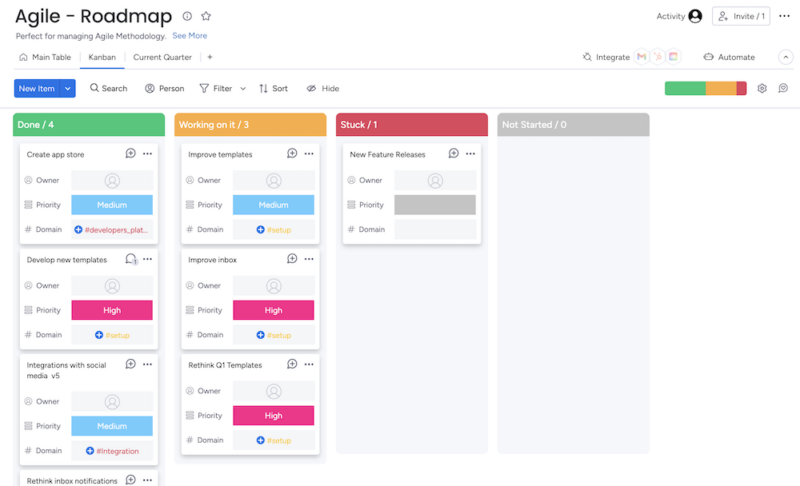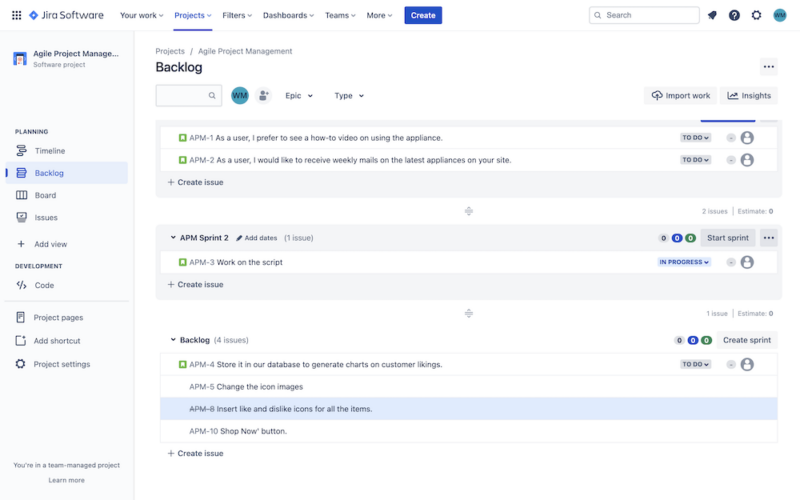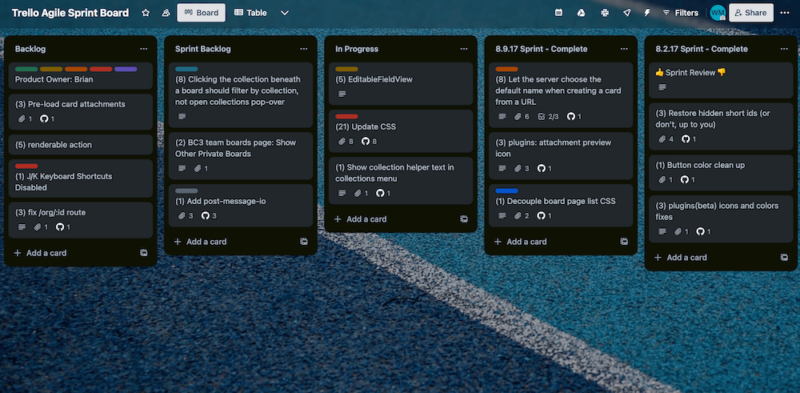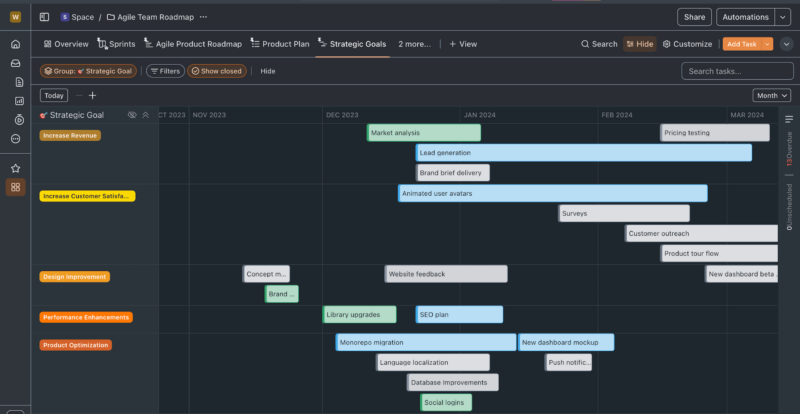Agile methodologies and frameworks provide a solution for organizations looking to improve their teams’ effectiveness and productivity. These proven methods, along with using some of the best project management software platforms and some of the best agile tools, help teams adapt quickly to change, collaborate effectively and deliver successful outcomes.
In this article, we have curated essential agile best practices that can improve your team’s workflow and project success. You’ll learn what agile project management is and the benefits of being agile, and we’ll share 25 best practices that span different agile project management methodologies. Let’s get started.
What Is Agile Project Management?
Agile project management is a flexible and iterative approach to managing multiple projects. The agile method allows teams to collaborate effectively and adjust to changes throughout the project’s life cycle rather than following a strict plan from start to finish like traditional project management methods.
Some popular agile frameworks include Scrum, kanban and extreme programming (XP). While each framework has unique characteristics, they all share the common goal of improving efficiency, enhancing collaboration and delivering high-quality products that meet the client’s needs.
Why You Need to Implement Agile Teams
Agile software development can bring many benefits to your development team, such as improved productivity, enhanced customer satisfaction and better alignment with business objectives. Furthermore, the collaborative nature of agile teams encourages communication, transparency and shared accountability, which lead to better project outcomes.
Agile teams are commonly associated with software development. However, a variety of organizations can benefit from agile teams, such as marketing departments and customer service teams. Even small businesses can adopt agile practices to quickly respond to market changes and customer needs.
Understanding the Agile Manifesto
The agile manifesto, introduced in 2001, outlines the core values and principles of agile software development. These include individuals and interactions over processes and tools, working software over comprehensive documentation, customer collaboration over contract negotiation and responding to change over following a plan.
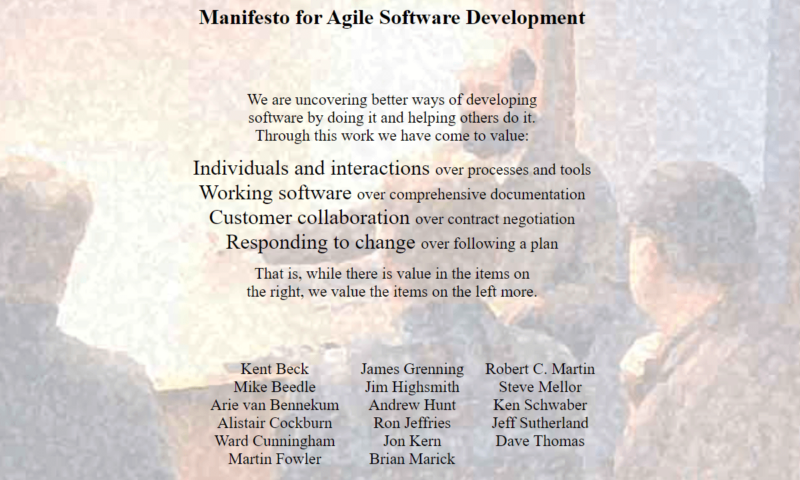
25 Agile Best Practices
Now that you know what agile is and how your team can benefit from being agile, let’s explore agile best practices that can empower teams toward success in agile development. We’ll start by looking at general agile best practices before moving on to specific agile frameworks.
Scaling Agile for Global Teams
As organizations grow and teams become distributed across different locations and time zones, scaling agile practices becomes essential to maintaining team performance. Here are some best practices for scaling global agile teams:
- Implement consistent tools: Use consistent tools and platforms across agile teams for project management, communication and task tracking. This will ensure smooth collaboration. Here are recommended tools for global software startups.
- Introduce cultural training: Provide training sessions to raise cultural awareness among team members from diverse backgrounds. Understanding cultural differences can enhance communication, build trust and lead to a more inclusive work environment.
- Create overlapping hours for collaboration: Consider scheduling overlapping hours where teams from different regions can connect in real time. Project managers and Scrum Masters can then conduct important meetings during this time, such as retrospectives and daily standups.
- Empower local leaders: Designate agile champions or Scrum Masters in each region to assist with local decision-making and problem-solving.
- Leverage frameworks for scaling agile: Implement frameworks such as the scaled agile framework (SAFe) or the Scrum of Scrums, which provide structured guidance for applying agile practices at scale.
Benefits of Agile Methodology
Now that you understand the key principles and best practices of agile project management methodology, let’s explore some of the benefits that come with implementing it in your organization.
1. Flexibility and Adaptability: Responding to Change
Agile methods allow teams to quickly respond to changes in project requirements, priorities and market conditions. Individual team members can adjust the strategies and plans as needed to ensure the project stays on track and delivers value.
2. Faster Product Delivery: Accelerating Time to Market
By embracing an agile approach, teams can prioritize the early and continuous delivery of a minimum viable product (MVP). Instead of waiting for a perfect final product, this development process accelerates the time to market and allows for quick feedback loops.
3. Risk Reduction: Early and Continuous Feedback
Early input from stakeholders and end users can help identify possible risks and issues at an early stage of the product development process. The constant feedback loop also lets teams quickly make necessary adjustments. This lowers the risk of project failure and ensures the final product meets customer expectations.
4. Enhanced Product Quality: Iterative Development & Improvement
Agile teams build projects through iterative cycles, continuously refining the product based on feedback. Furthermore, test-driven development (TDD) in the agile approach ensures thorough testing of each feature before integration, reducing the chances of bugs or defects slipping through.
5. Increased Business Value: Aligning with Customer Needs
Agile development prioritizes value-based business priorities and customer needs. Businesses can ensure they are delivering the most efficient processes and products, resulting in high customer satisfaction and increased business value.
Challenges and Solutions in Agile Software Development
While agile project management methods offer many benefits, organizations may face challenges during implementation. Here are some common challenges and potential solutions:
- Inadequate team collaboration: Lack of efficient and effective interaction on an agile team can lead to misunderstandings, delays and rework. To foster a supportive culture, encourage face-to-face team communication and use collaboration tools.
- Scope creep: Constantly changing project requirements can disrupt timelines and budgets, which can lead to scope creep. Agile teams should set clear project goals from the start, prioritize features based on business value and regularly review and adjust the scope with stakeholders.
- Quality assurance: Ensuring high-quality deliverables within short iterations can be challenging in software development. To address this challenge, integrate automated testing early in the development cycle, follow agile best practices for testing and implement continuous feedback loops.
- Transition from traditional project management: Shifting from traditional project management to agile’s iterative and flexible approach can be difficult for some team members. Agile teams may offer extensive training and progressively implement agile approaches to ease the transition and avoid future issues with anti-patterns.
- Lack of agile expertise: Without a deep understanding of agile principles and practices, teams may struggle to implement them effectively. Companies can invest in agile leadership training and provide workshops and resources for agile teams.
Final Thoughts
Maintaining high-performing agile teams and delivering high-quality products in a changing environment is undoubtedly challenging. However, by implementing agile best practices, teams can overcome difficulties and make agile methods sustainable in the long run.
One key practice is ensuring clear communication. For example, daily standups allow team members to discuss progress, roadblocks and priorities together. Engaging stakeholders and integrating their feedback into development is another essential practice that can increase customer satisfaction. If you follow the tips above, you’ll have no problems implementing agile.
We’d love to hear your thoughts and experiences with implementing agile development practices. Do you have any additional best practices to share? What challenges have you faced during your agile journey, and how did you overcome them? Let us know in the comments below. Thank you for reading!
FAQ: Agile Practices
-
The four principles of agile consist of individuals and interactions over processes and tools, working software over comprehensive documentation, customer collaboration over contract negotiation and responding to change over following a plan.
-
The five steps of agile methodology are envisioning the project, speculating on possible solutions, exploring different options, adapting to change and closing successful projects.
-
The three Cs of agile practice include collaboration, coordination and communication. These emphasize the importance of teamwork, adaptability and customer satisfaction in agile methods.
{“@context”:”https:\/\/schema.org”,”@type”:”FAQPage”,”mainEntity”:[{“@type”:”Question”,”name”:”What Are the 4 Principles of Agile?”,”acceptedAnswer”:{“@type”:”Answer”,”text”:”
The four principles of agile consist of individuals and interactions over processes and tools, working software over comprehensive documentation, customer collaboration over contract negotiation and responding to change over following a plan.\n”}},{“@type”:”Question”,”name”:”What Is the Most Popular Agile Practice?\t”,”acceptedAnswer”:{“@type”:”Answer”,”text”:”
Scrum is the most popular agile framework and involves working in short iterations or sprints to deliver incremental product development.\n”}},{“@type”:”Question”,”name”:”What Are the 5 Steps of Agile Methodology?”,”acceptedAnswer”:{“@type”:”Answer”,”text”:”
The five steps of agile methodology are envisioning the project, speculating on possible solutions, exploring different options, adapting to change and closing successful projects.\n”}},{“@type”:”Question”,”name”:”What Are the Three Cs of Agile Practice?”,”acceptedAnswer”:{“@type”:”Answer”,”text”:”
The three Cs of agile practice include collaboration, coordination and communication. These emphasize the importance of teamwork, adaptability and customer satisfaction in agile methods.\n”}}]}
The post 25 Agile Best Practices for High-Performing Teams in 2024 appeared first on Cloudwards.

